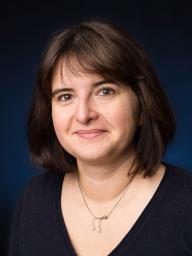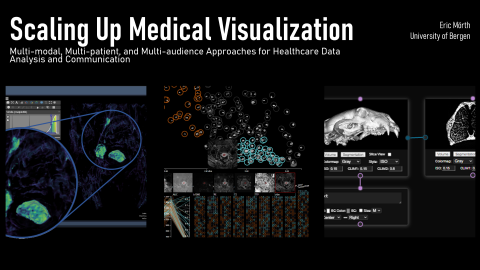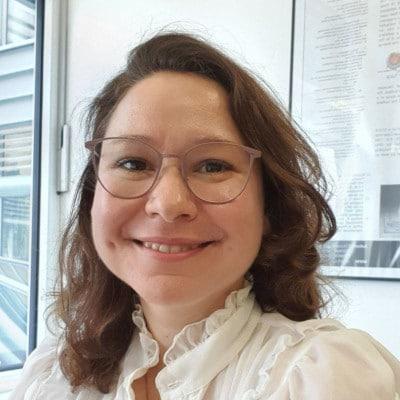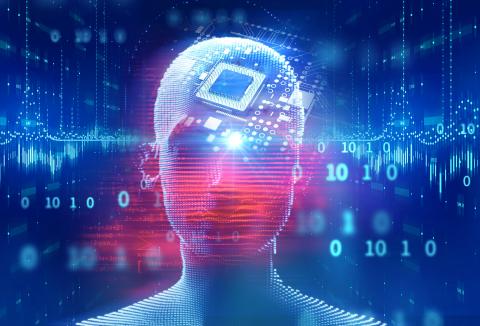Dr. Marwan Abdellah - Blue Brain Project - Ecole Polytechnique Federale de Lausanne (EPFL)
Abstract
The mammalian brain is a significant source of inspiration and challenge; it is the most complex phenomenon in the known universe whose function depends on the communication between countless structures, all spanning various spatial and temporal scales. The last century has witnessed massive efforts to reveal the intricacies of the brain to understand its function and dysfunction. Despite these efforts, our comprehension of the underlying mechanisms of the brain remains incomplete. A comprehensive understanding essentially requires collaborative efforts and profound insights into its structure and function across multiple levels of organization, from genetic principles to whole-brain level systems. Understanding the hidden aspects of the mammalian brain relying solely on wet lab experiments has been proven to be extremely limiting and time consuming. The data produced from such experiments is concerned with various levels of biological organization. The search space for unknown data is so broad, that it is debatable whether classical in vivo and in vitro experiments can provide enough results to answer all the questions in a reasonable time, unless a more systematic approach is followed. This approach requires integrating this data into a unifying multi-level system, which would allow us to build on previous knowledge and accelerate neuroscience research towards one and only one potential target: understanding the human brain.
The Blue Brain Project was founded in 2005, heralding the birth of a paradigm shift in neuroscience based on the fundamental insights of in silico research. This pioneering endeavor aims at integrating fragmented neuroscience knowledge from in vitro data in order to build detailed, multi-scale and biologically-accurate digital unifying models of rodents, and ultimately human brains. In 2015, the Blue Brain Project has achieved a long-awaited breakthrough: a first-draft digital reconstruction of the microcircuitry of somatosensory cortex of juvenile rat. This reconstruction is based on cellular and synaptic organizing principles to algorithmically reconstruct detailed anatomy and physiology from sparse experimental data. An objective anatomical method defines a neocortical volume of 0.29 ± 0.01 mm(3) containing ~31,000 neurons, and patch-clamp studies identify 55 layer-specific morphological and 207 morpho-electrical neuron subtypes. When digitally reconstructed neurons are positioned in the volume and synapse formation is restricted to biological bouton densities and numbers of synapses per connection, their overlapping arbors form ~8 million connections with ~37 million synapses. Simulations reproduce an array of in vitro and in vivo experiments without parameter tuning.
One approach to validate several structural and functional aspects of this model is to image it, in silico, expecting to achieve the same observations and findings a neurobiologist can reach in the wet lab. This mission entails defining a set of imaging experiments and then simulating them on a bio-physically-plausible basis assuming the existence of accurate biologically-detailed physical models of the cortical tissue and the imaging modalities employed to visualize it. This seminar addresses a novel visualization technology called In Silico Brain Imaging, or simply, how to image digital brain reconstructions simulated in supercomputers.
Bibliography
Marwan Abdellah is a Scientific Visualization Engineer and Post-Doctoral Fellow in the Scientific Visualization Section of the Computing Division in the Blue Brain Project. Marwan obtained his PhD in Neuroscience from EPFL in 2017. He received his Bachelor and Master’s degrees from the Biomedical Engineering Department, School of Engineering at Cairo University, Egypt. His current research focuses on building accurate computational models of brain imaging technologies using physically-plausible visualization methods.
Marwan joined the Blue Brain in 2011 as a Software Engineer and led the multimedia generation workflows, and also contributed to the development of the software applications required for interactive visualisation of neocortical digital models. His research interests include scientific visualisation, physically-plausible rendering, computer graphics and modelling, medical imaging, high performance computing and in silico neuroscience.
Selected Publications
* M. Abdellah, J. Hernando, N. Antille, S. Eilemann, S. Lapere, H. Markram, F. Schürmann. NeuroMorphoVis: a collaborative framework for analysis and visualization of neuronal morphology skeletons reconstructed from microscopy stacks. Oxford Bioinformatics, In Press.
* M. Abdellah, J. Hernando, N. Antille, S. Eilemann, H. Markram, F. Schürmann. Reconstruction and visualization of large-scale volumetric models of neocortical circuits for physically-plausible in silico optical studies. BMC Bioinformatics, 13 September 2017.
* Marwan Abdellah, Ahmet Bilgili, Stefan Eilemann, Julian Shillcock, Henry Markram, Felix Schürmann. Bio-physically plausible visualization of highly scattering fluorescent neocortical models for in silico experimentation. BMC bioinformatics 18, no. Suppl 2 (2017): S8.
* Abdellah, Marwan, Ahmet Bilgili, Stefan Eilemann, Henry Markram, and Felix Schürmann. Physically-based in silico light sheet microscopy for visualizing fluorescent brain models. BMC bioinformatics 16, no. Suppl 11 (2015): S8.
* Abdellah, M., Abdelaziz, A., Ali, E. E., Abdelaziz, S., Sayed, A., Owis, M. I., & Eldeib, A. (2016, August). Parallel generation of digitally reconstructed radiographs on heterogeneous multi-GPU workstations. In Engineering in Medicine and Biology Society (EMBC), 2016 IEEE 38th Annual International Conference of the (pp. 3953-3956). IEEE.
* Henry Markram, Eilif Muller, Srikanth Ramaswamy, Michael W Reimann, Marwan Abdellah, Carlos Aguado Sanchez, et al.“Reconstruction and simulation of neocortical microcircuitry. Cell 2015.
* Ramaswamy, Srikanth, Jean-Denis Courcol, Marwan Abdellah, Stanislaw Adaszewski, Nicolas Antille, Selim Arsever, Guy Antoine et al. The Neocortical Microcircuit Collaboration Portal: A Resource for Rat Somatosensory Cortex. Frontiers in Neural Circuits 9 (2015).




